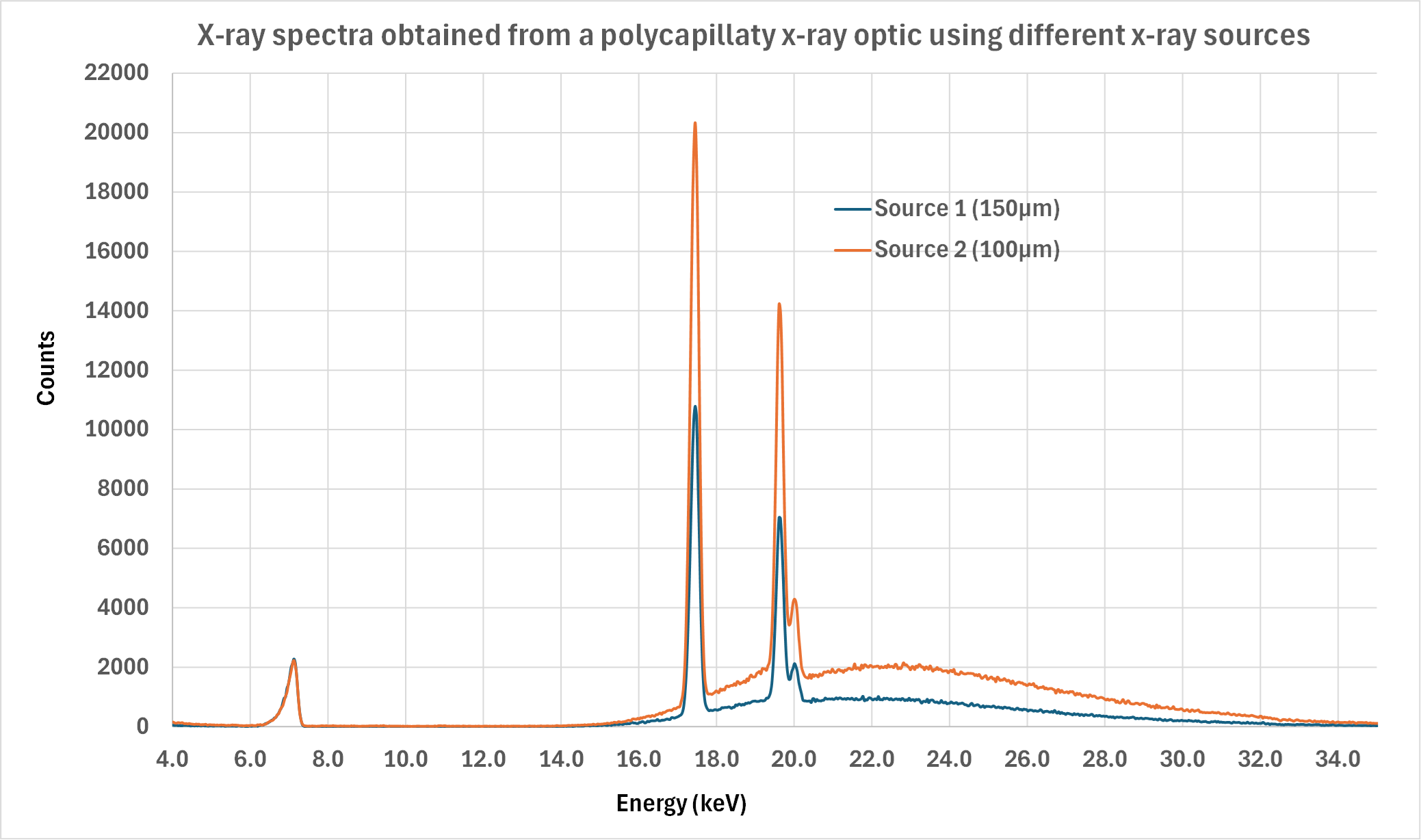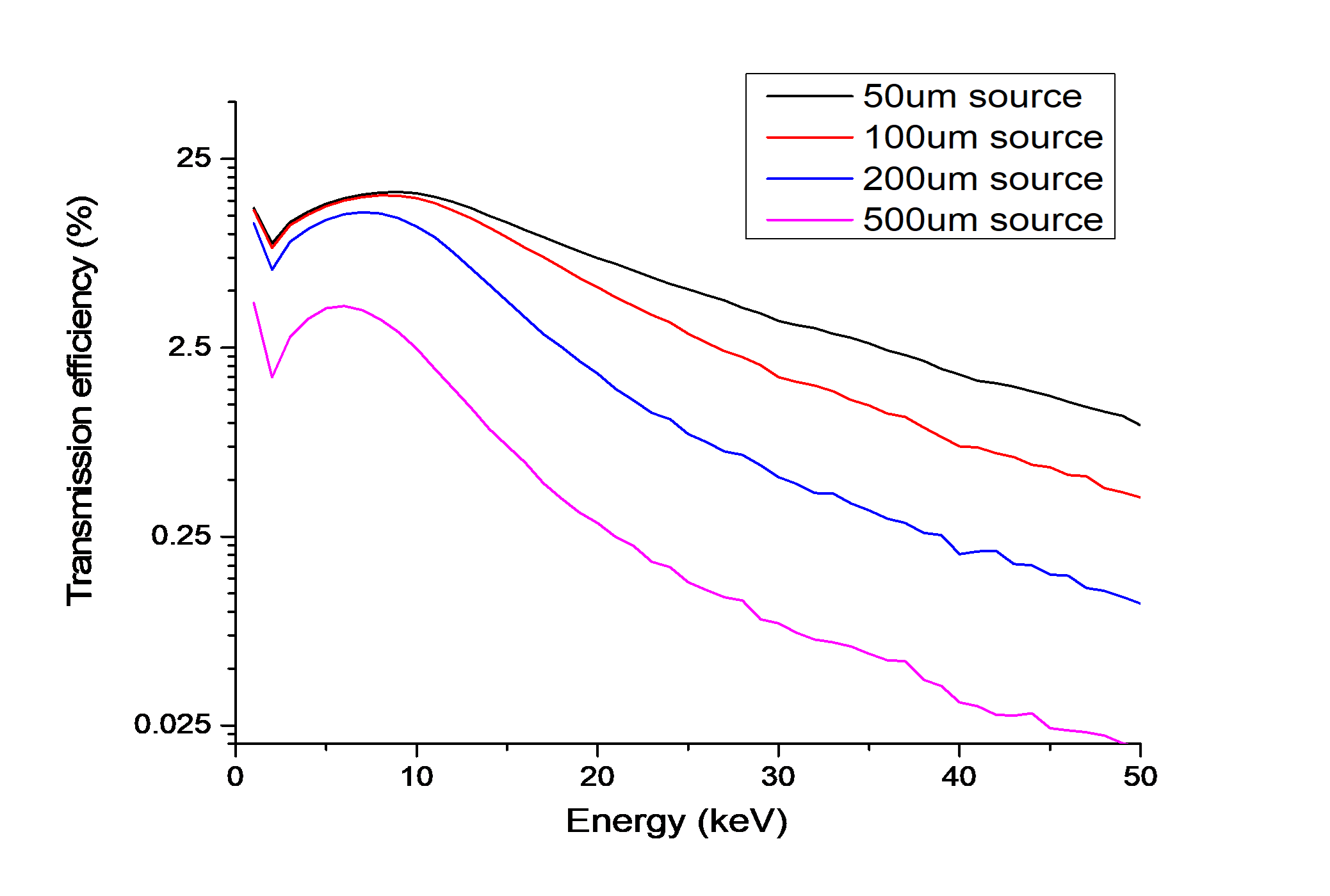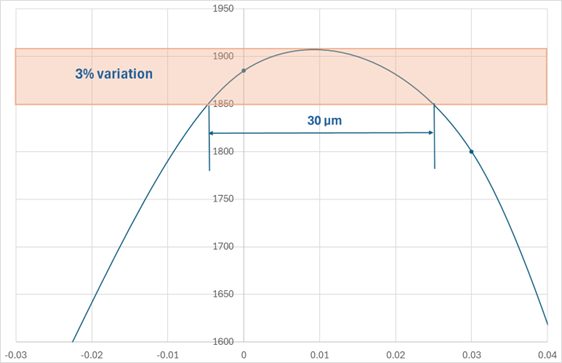- Analyzers
- Optics & Sources
- Technologies
- Support
- About
Five Things to Consider When Coupling a Polycapillary X-ray Optic With an X-ray Source
Dr. Ning Gao
Five Things to Consider When Coupling a Polycapillary X-ray Optic With an X-ray Source
Dr. Ning Gao
Dr. Ning Gao
Polycapillary X-ray optics are devices that collect and focus X-rays from a divergent source using an array of hollow glass capillaries. They can enhance the performance of various X-ray applications, such as X-ray fluorescence, X-ray diffraction, and X-ray imaging. However, pairing a polycapillary X-ray optic with a proper X-ray source requires careful consideration of several factors that affect the efficiency and quality of the X-ray beam. In this article, we discuss the five main things to consider when coupling a polycapillary X-ray optic with an X-ray source.
The X-ray source size is one of the most critical parameters that determine the transmission efficiency of polycapillary optics. The smaller the source, the more efficiently that X-rays can transmit through the curved channels of the optics by multiple external total reflections. Therefore, it is desirable to use a source that has a small and circular spot size, such as a microfocus X-ray tube. Figure 1 below shows the comparison of X-ray spectra obtained from a polycapillary focusing optic using two X-ray sources with different source sizes. Please note that the X-ray intensity difference varies with the X-ray energy, which is another important characteristic of polycapillary optics – the higher the X- ray energy, the more impactful of the small X-ray source will be on the transmission efficiency of the optics. Figure 2 shows the simulation results of the transmission curves of an optic when coupling with X-ray sources of different source sizes.

The access distance of an X-ray source is normally determined by the distance between the X-ray source and the beryllium window of the X-ray tube, and this distance determines how close a polycapillary optic can be placed to the X-ray source. The source-to-optic distance aff ects the collection solid angle of the X-rays entering the optic and therefore the output X-ray intensity. From simple geometry point of view, the shorter the distance, the more X-rays can enter the input end of the optic and that should lead to higher output X-ray intensity. However, the short source- optic distance must be combined with a small X-ray source to allow realize the higher X-ray flux. At any given source-optic distance, if the source size is larger than the input focal spot size of the optic, which is proportional to the source-optic distance, the optic will not able to “see” the whole X-ray source and that will lead to lower output X-ray flux. Therefore, it is part of the optic design process at XOS to optimize the input focal distance of the optic based on the source-optic distance and the source size.

An X-ray source needs to be perfectly aligned with a polycapillary to ensure the optimal performance. At the same time, it is equally important to maintain the source-optic alignment over time. This is particularly true for industrial applications in which long-term system stability is crucial for quality and process control. As demonstrated in Figure 3, an X-ray source drift of a few microns could lead to more than 1% variation of the output X-ray intensity. Therefore, it is important to get the source position stability information when acquiring an X-ray source to be used with a polycapillary optic. Considering that the change of power loading of the X-ray source will normally lead to a slight position drift of the X-ray source, it is always a good practice to align the X-ray source with the optic at the operation power to minimize the source drift effect.

A polycapillary optic captures a large solid angle of X-rays from an X-ray source and redirects them to a micron-sized focal spot or a highly collimated beam. The X-ray intensity achieved with such optics is a few orders of magnitude higher than that obtained with conventional pinhole collimators, contributing to the significantly improved X-ray analysis performance in detection sensitivity, spatial resolution, measurement speed, and precision. XOS optics are widely used in commercial instruments and customized X-ray analysis systems for various industrial and research applications in the fields such as microelectronics, semiconductor manufacturing, pharma, and life sciences.

One of the limiting factors of the maximum power loading of an X-ray source is the X-ray source size. This is particularly true for a microfocus X-ray source. Because of this limitation, the smallest X-ray source may not be the best option for an optic user. Considering that the relationship between the source size and the maximum power loading can be complicated, the optic simulation tool becomes most useful in selecting the X-ray source and optimizing the system performance. It is also worth noting the source option between a reflection-target X-ray source vs. a transmission-target source. A transmission-target X-ray source could offer better source position stability and short source access distance because of the design geometry. However, the total X-ray emission from the X-ray source is typically a few times lower than that of a reflection-target X-ray source. While the ultimate goal of a polycapillary-based X-ray excitation system is to maximize the output X-ray flux at given energy range and given output focal spot size, a reflection-target X-ray source will normally be a preferred option.
Related: Maximizing Polycapillary Optic Performance: Choosing the Perfect X-ray Source and More
Modern microfocus X-ray sources use electron-focusing technology in the source design to achieve small source size. Ideally, all the electrons would be focused on the anode of the X-ray source with a square-function distribution; however, a Gaussian distribution is more common for most commercial X-ray source products. In testing X-ray sources from different manufacturers, we had found that some microfocus X-ray sources have double-hump distribution while others have shown high tail on which a very small source lies. When such X-ray sources are coupled with a polycapillary optic, the output X-ray flux can be less than 50% of that obtained from an X-ray source with clean gaussian distribution, which will lead to lower system performance.
Polycapillary X-ray optics offer unique performance benefits for various X-ray analysis applications. To fully realize these benefits and optimize the system performance, the users need to pick appropriate X-ray sources by considering the five factors as discussed in this document: source size, access distance, source position stability, maximum power loading, and source distribution. By using them as references, one can optimize the X-ray beam characteristics and achieve the best results for the applications.

Dr. Ning Gao has over two decades of experience in advanced X-ray optics, particularly in polycapillary X-ray optics. He works closely with XOS customers, from leading OEMs (original equipment manufacturer) in material testing industry to end users from universities and national labs in pioneering research fields, to find the optimal solutions for their application needs.
As a globally recognized expert in X-ray optics and their applications, Dr. Gao is active in analytical X-ray industry community and in collaboration with top scientists on many pioneering research and development projects including the PIXL instrument on the recently launched Mars Perseverance Rover.
If you'd like to get in touch with Ning or one of our other experts, click here.

